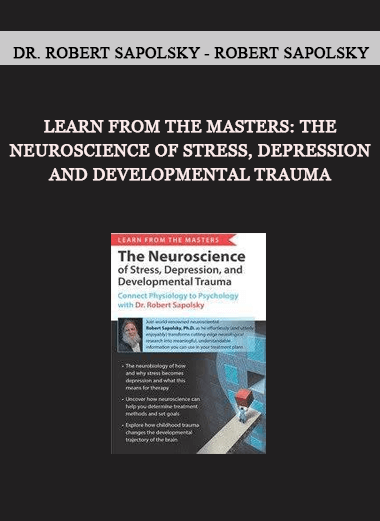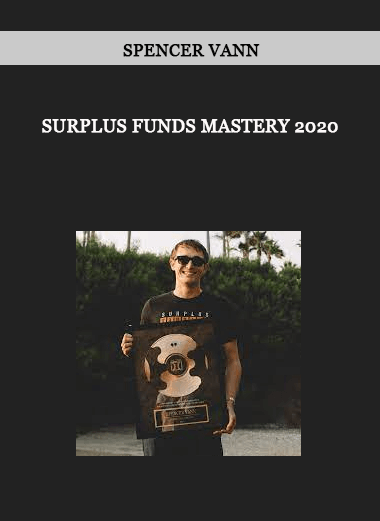Courses Infomation
Learn from the Masters: The Neuroscience of Stress, Depression and Developmental Trauma by Dr. Robert Sapolsky – Robert Sapolsky

Learn from the Masters: The Neuroscience of Stress, Depression and Developmental Trauma by Dr. Robert Sapolsky – Robert Sapolsky
**More information:
Description
Dr. Robert Sapolsky, Ph.D., is a MacArthur “Genius” Fellow, a professor of biology and neurology at Stanford University, and a research associate with the Institute of Primate Research at the National Museum of Kenya. In 2008, National Geographic & PBS aired an hour-long special on stress featuring Dr. Sapolsky and his research on the subject. In addition to A Primate’s Memoir, which won the 2001 Bay Area Book Reviewers Award in nonfiction, he has written three other books, including The Trouble with Testosterone, Why Zebras Don’t Get Ulcers, and Monkeyluv and Other Essays on our Lives as Animals. Dr. Sapolsky was awarded Rockefeller University’s Lewis Thomas Prize for Writing about Science for 2008. His articles have appeared in publications such as Discover and The New Yorker, and he writes a biweekly column for the Wall Street Journal entitled “Mind & Matter.” His new book is Behave: The Biology of Humans at Our Best and Worst (Penguin Press May 2017).
Speaker Disclosure:
Financial: Robert Sapolsky is a professor at Stanford University. He is a research associate at the National Museum of Kenya. Dr. Sapolsky receives a speaking honorarium from PESI, Inc.
Non-financial: Robert Sapolsky has no relevant non-financial relationship to disclose.
- What Does Biology Have to do With It?
- The Nature of Stress and the Stress Response
- The nature of stress
- Homeostasis
- The dichotomy between short-term and long-term stress exposure
- The stress response
- Hormones and autonomic pathways
- How the long-term stress response impacts the brain and body
- The Nature of Stress and the Stress Response
- Clinical Manifestations of Chronic Stress in Your Clients
- Impaired declarative memory
- Vulnerability to anxiety and fear conditioning
- Impaired executive functioning
- Impaired empathy
- The Interplay of Stress, Depression and
- Developmental Trauma
- The Neurochemistry and Neuroanatomy of Stress, Depression and Childhood Adversity
- How and why stress becomes depression
- Neurobiological mechanisms
- The psychological components of stress
- Learned helplessness as a model for depression
- Stress as a bridge linking the biological and psychological features of depression
- The genetics of affective resilience in the face of stress
- Childhood adversity as a risk factor
- How traumatic stress shifts the trajectory of brain development
- Clinical implications
- The Neurochemistry and Neuroanatomy of Stress, Depression and Childhood Adversity
- Connecting Biology to Psychology in Your Clinical Practice: An Interview with Dr. Jennifer Sweeton
- When is stress good?
- How can neurobiology help you to determine treatment methods and set goals?
- Coping with stress – social isolation vs. social affiliation
- Techniques that impact stress pathways, the stress response and the brains limbic regions
- Strategies to create resilient brains that are less susceptible to stress-based damage
- Gratitude interventions for stress and depression
More information about Medical:
Medicine is the science and practice of establishing the diagnosis, prognosis, treatment, and prevention of disease.
Medicine encompasses a variety of health care practices evolved to maintain and restore health by the prevention and treatment of illness.
Contemporary medicine applies biomedical sciences, biomedical research, genetics, and medical technology to diagnose, treat, and prevent injury and disease,
typically through pharmaceuticals or surgery, but also through therapies as diverse as psychotherapy, external splints and traction, medical devices, biologics, and ionizing radiation, amongst others.
Medicine has been around for thousands of years, during most of which it was an art (an area of skill and knowledge) frequently having connections to the religious and
philosophical beliefs of local culture. For example, a medicine man would apply herbs and say prayers for healing, or an ancient philosopher and physician would apply bloodletting according to the theories of humorism.
In recent centuries, since the advent of modern science, most medicine has become a combination of art and science (both basic and applied, under the umbrella of medical science).
While stitching technique for sutures is an art learned through practice, the knowledge of what happens at the cellular and molecular level in the tissues being stitched arises through science.































Reviews
There are no reviews yet.